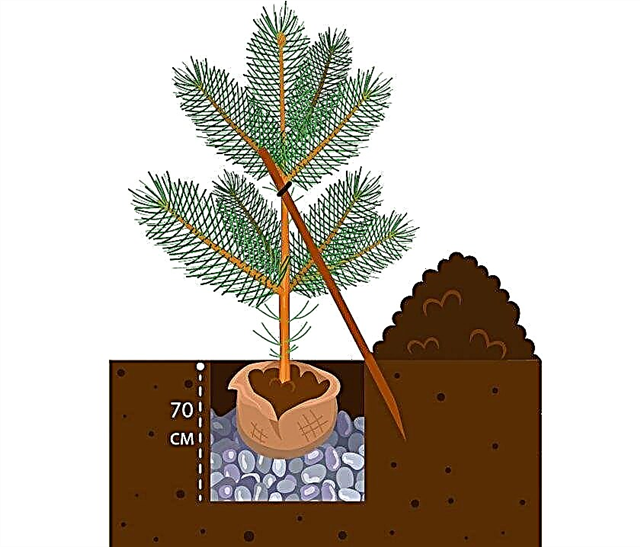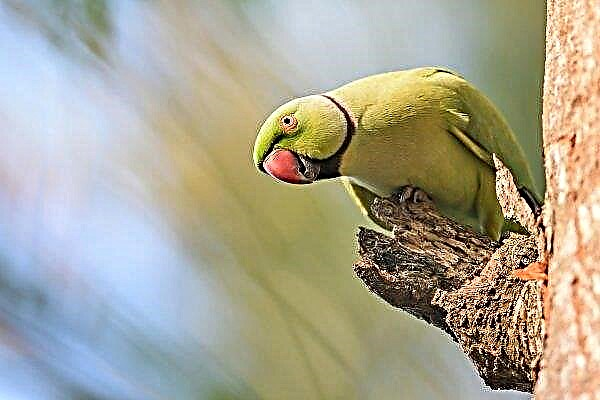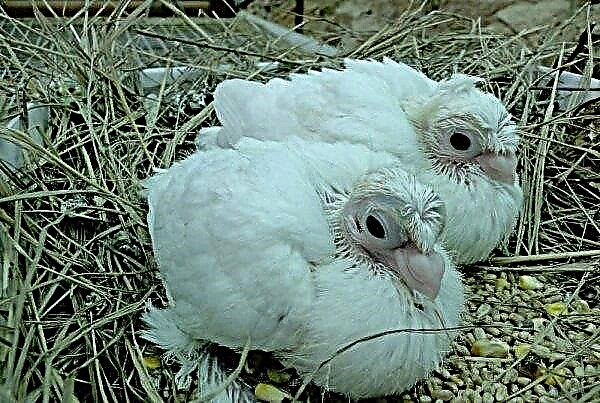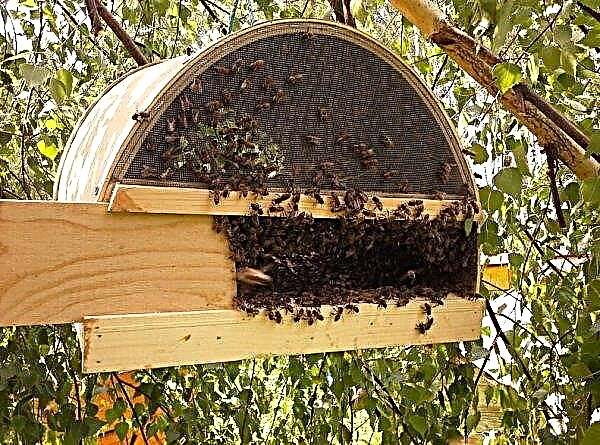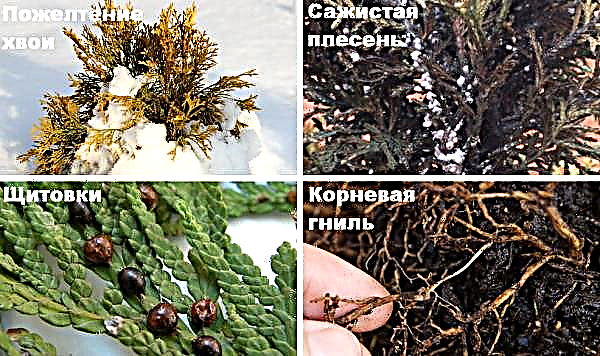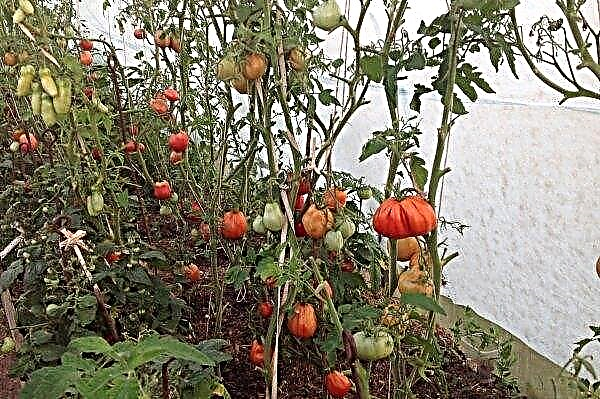Orchid phalaenopsis is very popular among fans of growing flowers at home. One of the important factors in the content of phalaenopsis is its reproduction. The owner of the flower should definitely study all the subtleties of this issue.
How to care for phalaenopsis
For successful growth phalaenopsis requires proper care. The temperature in the room should be kept at +18 ... + 25 ° С. The maximum allowable indicators of cold and heat are + 12 ° C and + 35 ° C, respectively, however, at this temperature for a long time it is not recommended to contain a flower. It is strictly forbidden to cross these boundaries.
The moisture level in the air should be kept within 30–40%. Both high and low humidity will negatively affect the state of phalaenopsis.Did you know? The name "phalaenopsis" from Greek is translated as "similar to a butterfly." So he was called by the botanist Karl Blume, who from afar took the flower for a moth.
Watering is carried out as the soil dries. Waterlogging and stagnation of water in a pot are extremely undesirable because of the possibility of root decay. It is important to wait for the drying of not only the upper, but also the lower layer of the substrate. At the same time, prolonged dehydration is also fraught with a violation of the state of the flower and its wilting.
You need to fertilize the plant along with watering during the period of active growth (most often it is spring and summer, but it is better to take into account the individual characteristics of phalaenopsis). An excellent option would be the tool "Kemira Lux."
Plant transplants are performed infrequently, every 2-3 years. A sign of the need to move the flower to another container is a deterioration in the quality of the substrate. It is best to resort to the procedure after flowering.
In this case, the substrate should consist mainly of bark, and sphagnum can also be added to it, which is especially useful when keeping the flower in conditions of low humidity. It is better to choose a pot transparent and made of plastic, but experienced flower growers may contain phalaenopsis in containers of clay, ceramic or glass.
Leaves need to be regularly wiped and cleaned of dust. Also, one should not forget about the aerial roots that are inherent in this orchid. You do not need to try to hide them in the substrate. It is necessary to monitor their condition and cut off the dried roots in time.
Optimum breeding times
In order for the reproduction to be as successful as possible, it is necessary to wait until the end of flowering. During this period, the plant does not spend a lot of vital resources on other processes, and this procedure will not bring much stress.
When choosing a location during the propagation of phalaenopsis, it is necessary to pay special attention to the microclimate. The main condition is not to place it in direct sunlight. Lighting should be scattered so that the plant does not receive burns. It is also important to adhere to humidity indicators of 50–80%. The temperature is set within +28 ... + 30 ° С.
Preparatory work
It is advisable to plant Phalaenopsis in special containers designed for orchids. These are transparent plastic pots with drainage holes and holes on the sides for better air circulation and lighting of the root system.
Since during the reproduction the root system of the children is still small, you can use not large containers, but small transparent plastic cups with holes made.
Soil is also important. Orchids are epiphytes and in the wild grow on trees directly from the bark. For home cultivation, it is desirable to bring the conditions closer to natural, so the substrate should consist mainly of tree bark, most often pine.
Also added to it are sphagnum, brick crumbs, polystyrene. Before planting, the bark must be processed by boiling in water for 20 minutes.
Did you know? Phalaenopsis is mentioned in literary works. So, in a series of books by Rex Stout about detective Niro Wolfe, the main character is a passionate collector of orchids, a special place among which is occupied by phalaenopsis.
Before propagation, you need to inspect the flower itself. It should be healthy, not have any spots, blackening and rottenness on the stem.
Propagation of phalaenopsis at home
At home, phalaenopsis can be propagated in four ways, namely, children, cuttings, peduncle and roots.
Kids
The most commonly used phalaenopsis reproduction by children. They are obtained from buds located on the stem and peduncle of orchids under thin scales.  They are located slightly below the buds. After the plant fades, you can either leave them for re-flowering, or stimulate the appearance of children from these buds with your own hands.
They are located slightly below the buds. After the plant fades, you can either leave them for re-flowering, or stimulate the appearance of children from these buds with your own hands.
To do this, create the following conditions for the flower:
- high temperature during the day (+28 ... + 30 ° С) and much lower at night (+16 ... + 18 ° С);
- increased moisture in the air;
- rare watering with a small amount of water.
Next, the baby should be dried and dropped into a small container, for example, a plastic cup filled with a substrate. It is desirable that the bark was fine-grained. A glass with a child is recommended to be placed in greenhouse conditions and grown at a temperature of +20 ... + 25 ° C.
Cuttings
Cuttings are a simple and relatively easy way to propagate phalaenopsis.
To successfully complete the procedure, you must perform the following steps:
- After flowering, cut the peduncle into cuttings, each of which should have 1 kidney in a sleeping state in the center. The length of each of them should be 3-5 cm.
- Slices processed with powdered charcoal.
- Treat the cuttings with the drug "Dr. Folly."
- Place them in sphagnum and cover with cellophane.
- Set the temperature in the range of +28 ... + 30 ° С and keep the cuttings in sphagnum until the leaves and roots grow.
- Plant in a container with a substrate.
Flower stalk
You can propagate an orchid by separating the peduncle and growing children on it. The best option would be to cut the peduncle and let it dry for 24 hours.
The kidneys on it should be treated with the hormone paste mentioned above. The dried flower stalk should be placed in a bottle filled with water. The container can be covered with a plastic bag. Until several sheets and 5 roots appear, keep in a warm and well-lit place. Next, the baby is separated and planted in the substrate according to the usual algorithm.Important! If the baby did not take root, and the flower stalk turned yellow, it can already be separated and planted in a container filled with moss, and kept in such conditions until rooted.

Rooted
Division of the root in phalaenopsis is impossible. However, the owner can propagate the plant by the following variation of the root method.
- Cut off the upper part of the phalaenopsis with 4–5 leaves, a growth point and aerial roots.
- Disinfect slices with powdered charcoal.
- Disconnect the detached part in a container filled with a substrate suitable for orchids.
- Continue caring for the maternal and detached parts as normal adult phalaenopsis.
After a while, the top should take root and new leaves into growth, and from the bottom, the children will begin to grow. This method is quite dangerous and does not guarantee the survival of the upper and further growth of the lower part of the flower.Important! Only adult phalaenopsis with 6-8 leaves can be propagated in this way.
Video: Phalaenopsis propagation by roots
How to care for a plant after planting
After rooting and planted phalaenopsis, after reproduction, they quickly grow.
From now on, they need to be looked after, following the standard rules:
- air temperature - +18 ... + 25 ° С;
- humidity - 30–40%;
- indirect and diffused light;
- moderate watering after drying of the substrate;
- top dressing during the growth period along with watering.
Possible growing problems
When growing a flower, some problems may occur.
They are mainly associated with improper care:
- Fungal diseases. The appearance and spread of fungal rot most often occurs with abundant watering. Affected parts must be removed. A fungicide, for example, Mikosan, is used for treatment.
- Yellow spots on the leaves. This may be a sign of sunburn. The plant needs to be rearranged in a less lit place. Better to avoid placement on the south windowsill.
- Folding off foliage. The cause is most likely a draft or too cold air. There may also be a violation of the general rules of temperature, humidity, watering and fertilizers. In order to avoid such problems, you must adhere to the instructions for caring for phalaenopsis as clearly as possible.
Reproduction of phalaenopsis is not the easiest and most painstaking work. However, when all the rules are followed, the planted daughter orchid will certainly grow and will delight the owner with a beautiful flowering.


